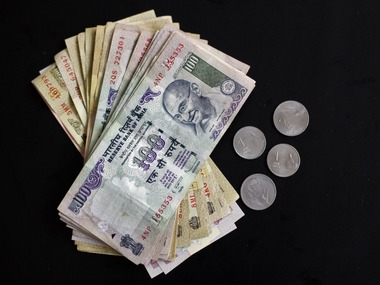Bad management of the country’s economy could cost the Congress its political supremacy as people do not believe that the nation’s fiscal condition is in a good condition, a survey said.
According to a survey conducted by Centre for the Study of Developing Societies(CSDS) for CNN-IBN and The Hindu, 32 percent of the respondents in a sample size of 19,062 preferred to call the economy 'so-so' while 31 percent slammed it as either ‘bad’ or ‘very bad’.
[caption id=“attachment_977123” align=“alignleft” width=“380”] Economy woes for UPA. Reuters[/caption]
The Congress-led United Progressive Alliance (UPA) government, which is already struggling to tame inflation and keep a fluctuating rupee under control vis-a-vis US dollar, may find itself on a sticky wicket in the next elections.
In the survey, 26 percent of the respondents felt that the Bharatiya Janata Party (BJP) is better equipped to tackle the financial crisis.
However, 23 percent of the respondents still believe Congress is more capable of handling the economy better than its saffron rival. These respondents belonged to the middle and upper classes and hailed from urban areas.
Most notably, the poll discovered that even non-Congress, non-BJP supporters seem to favour BJP more than the Congress in this regard.
Another criticism for the UPA is that the respondents unanimously agreed that the gap between the rich and the poor widened during the tenure of UPA 2. The UPA 2 had come to power in 2009.
Although urban India may allow the UPA some cheer in case of employment generation , rural India does not share the same opinion. While 27 percent of rural India felt that availability of employment has increased, 34 percent of respondents in urban India agreed with them. Both in urban and rural India, 29 percent of the respondents said that the employment opportunities have decreased.
The response was dramatic when the question on inflation was asked and the respondents asked to compare it with the situation in 2011.
While 51 percent of the respondents had said that the prices of essential commodities increased in 2011 , this figure jumped to a whopping 81 percent in the 2013. In the 2011 survey, the sample size was 20,854.
During the rule of UPA 2, the survey revealed that perception about price rise is strongest among lower class respondents living in urban areas and upper class respondents living in rural areas. What’s w orse for the Congress is that except for Andhra Pradesh and Assam, most of the respondents in all other states where the survey was conducted blamed the Central government for price rise. People in Bihar blamed the Centre the most for inflation, with 59 percent of the respondents choosing to blame it.
On the personal front, 59 percent said they were satisfied with their financial condition and 34 percent reported dissatisfaction.
Although the satisfaction with the personal financial condition remains high, it is however less when compared with figures in 2004, 2009 and 2011 when the same question was asked to respondents. In 2004, the sample size was 27,189 while in 2009 it was 36,629.
It was noted in the study that down the class hierarchy , dissatisfaction with their personal financial condition increased. Significantly, satisfaction with personal financial condition went down across all classes compared to 2011. The sharpest drop was observed among the middle class as it plummeted to 65 percent in 2013 to that of 72 percent of 2011.


)
)
)
)
)
)
)
)
)



